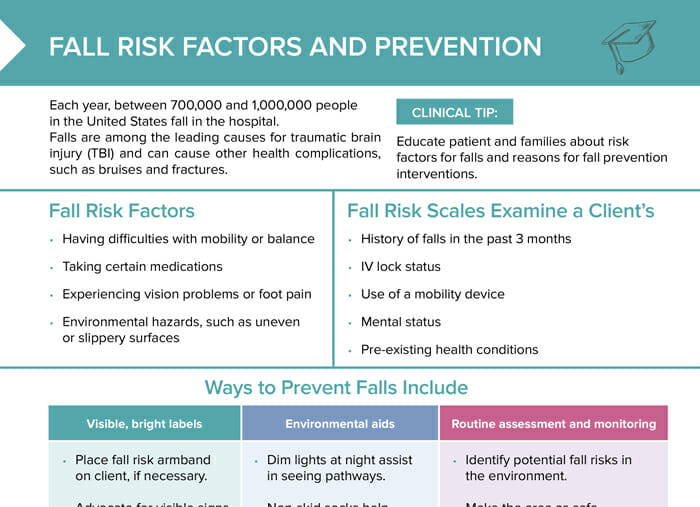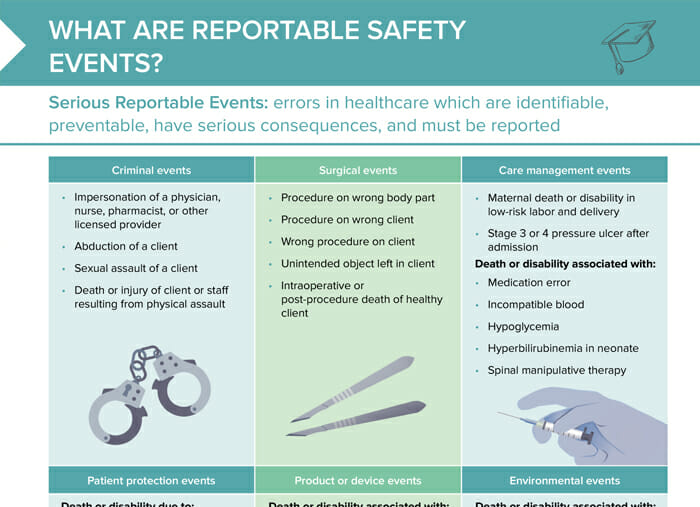What is a patient safety event?
A patient safety event is any circumstance or action that could have resulted in or did result in harm to a client while under the care of healthcare professionals.
Types of safety events: terminology
The ASHRM defines a serious safety event in the healthcare setting as “a deviation from generally accepted practice or process that reaches the patient and causes severe harm or death.”
The HPI’s working definition of a safety event that does not result in actual harm to a client is a “near miss safety event.”
A precursor safety event is defined as a safety event that does reach the patient but results in minimal or undetectable harm.
A sentinel event is defined as a patient safety event that results in severe harm and consequences to the client. This can also be referred to as a “Level 1 adverse event.”
Note that the definition and classification of patient safety events varies between organizations.
Criminal safety events
Criminal safety events are safety events that are the result of a criminal action of healthcare staff, such as:
- Someone impersonating a healthcare provider
- Abduction of a client
- Sexual assault
- Physical assault
Surgical safety events
Surgical safety events include all mistakes in the OR setting, including:
- Procedure on wrong client or body part
- Procedure on wrong client
- Object left in client’s body
- Intraoperative or post-procedure death of healthy client
Care management events
Care management safety events include:
- Maternal death or disability in low-risk labor and delivery
- Stage 3 or 4 pressure ulcer after admission
- Death or disability associated with:
- Medication errors
- Blood incompatibility
- Hypoglycemia
- Hyperbilirubinemia in neonates
- Spinal manipulative therapy
Patient protection events
This type of safety events is associated with situations where clients should have been protected from themselves, such as:
- Client elopement
- Client suicide, attempted suicide, or self-harm
Product or device safety events
Safety events related to medical devices or products include death or disability of client due to:
- Use of contaminated drugs, devices, biologics
- Use of wrong device
- Malfunctioning equipment
Environmental safety events
Examples of environmental safety events are:
- Electrical shock
- Wrong or contaminated gas (e.g. oxygen)
- Burns
- Falls
- Death or disability due to restraints or bed rails
How to prevent serious patient safety events
Measures to minimize the risk of safety events include, but are not limited to:
- Follow standard procedures
- Communicate effectively and educate whenever possible
- Report and learn from errors
- Ensure accurate medication management
What to do when a patient safety event occurs
- Firstly: Ensure the client is stable.
- Report and document the event according to your facility’s guidelines
- Participate in an analysis of the root causes of the event
- Participate in communication of the safety event with client and family

